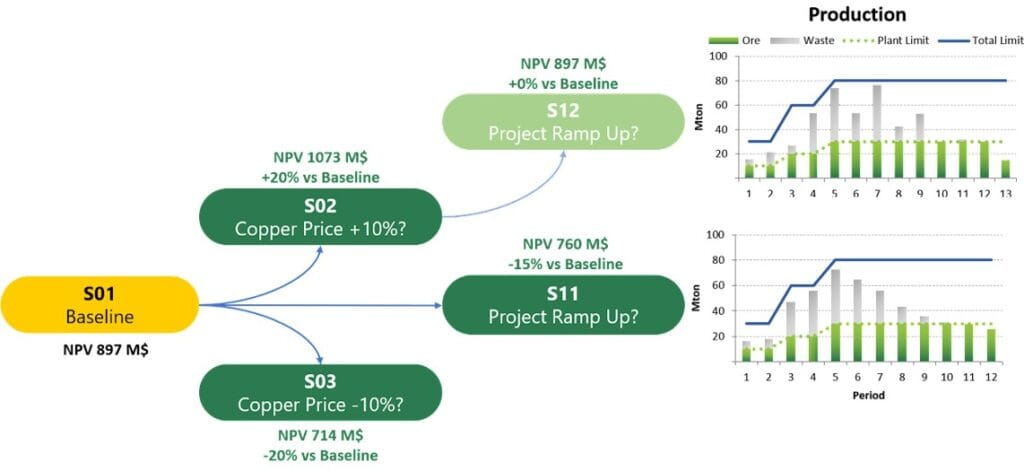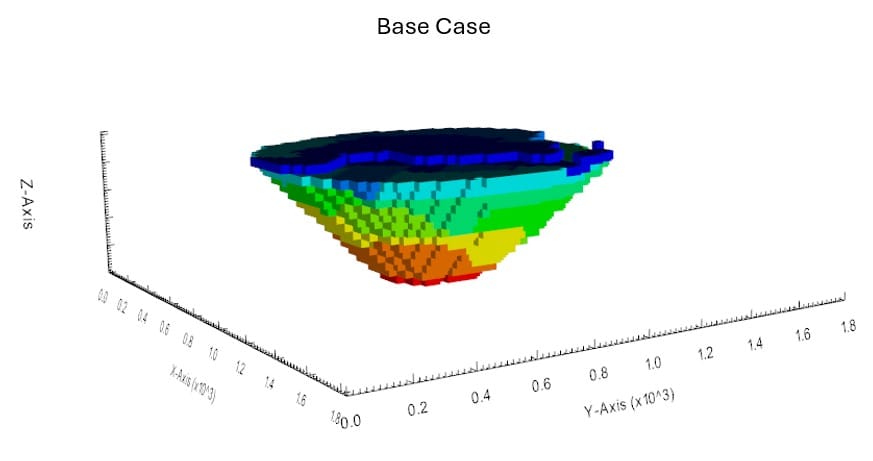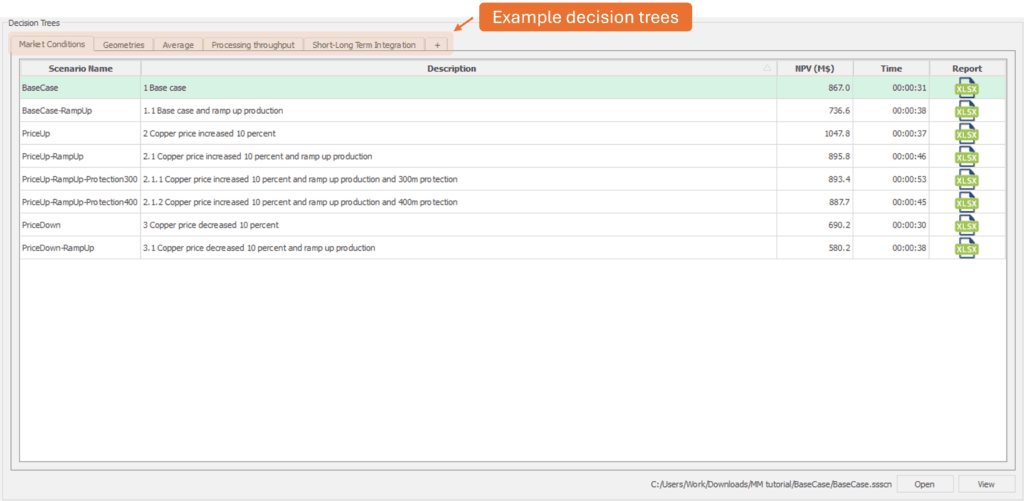Decision Trees
Decision Trees give you a comprehensive view of your project, helping you plan your mining sequence by evaluating every possible scenario. They allow you to assess constraints, identify the most viable and profitable options for the overall project, and understand the impact of different variables on the final NPV. For example, consider plant production per year as a variable factor. With Decision Trees, you can analyze how each constraint—such as ore price—impacts annual production and influences the overall success of the project.
By running multiple scenarios within the same Decision Tree, you can also assess how each change affects the generated mining sequence, as in the example below.
This broader perspective helps you determine the best course of action to maximize value for your company.
Decision trees in the interface
Once a project is selected, the Decision Trees and Model areas will be displayed (as depicted below).
From this area, you can get a comprehensive overview of all scenarios and their respective NPVs. Additionally, you can create decision trees and easily add or remove scenarios as needed. For more information about using the decision trees interface please check the contents here.
Example scenarios
MiningMath comes pre-installed with a number of decision trees that can be used for learning purposes.
To illustrate scenario analysis within a decision tree, the following subsections compare two pairs of scenarios.
Increase in the value of copper
Let’s analyze the PriceUp scenario where the economic value of Process 1 changes (for more information about calculating economic values check the page here).
Naturally, key metrics like NPV are affected. By examining both the NPV and total movement, we can see that a different mining sequence was generated, extending the mine’s lifetime by one period.
Total mass (Process+waste) handled on each scenario.
This market shift also led to an increase in cumulative NPV, directly influenced by the rise in copper selling prices.
Comparison of cumulative NPV. No increase for base case at period 11.
Adding an average grade limit
Next, let’s analyze the AvgCu scenario in which a restriction in the average grade at Process 1 was added, using a minimum and a maximum limit of copper.
The blocks selected for processing must meet established targets, enabling better selectivity in determining what should be processed. Blocks with grades higher or lower than required can be blended to achieve an average grade that aligns with constraints while maximizing NPV.
Notably, most periods saw an increase in total mass (production + waste) due to a higher stripping ratio (ore/waste). This adjustment was necessary to maintain the 30 Mt ore production at Process 1 while meeting the average grade targets set in the AvgCu scenario.
Total mass (Process+waste) handled on each scenario.
In this scenario, more efficient stockpiling is expected, allowing the algorithm to leverage its blending capabilities and decision-making intelligence to determine the optimal block combinations for maximizing plant capacity.
Additionally, the cumulative NPV reveals that imposing average grade constraints reduces the algorithm’s flexibility, leading to some financial loss in exchange for the operational stability often required in processing plants.
Comparison of cumulative NPV. No increase for base case at period 10.
Overall, MiningMath aims to maximize cumulative NPV while minimizing the mine’s lifetime, given the provided constraints. This approach helps reduce project depreciation caused by interest rates.
A smarter way to evaluate mining projects
In conclusion, MiningMath streamlines mine project evaluation by replacing traditional, time-consuming methods—often based on 1960s technology and reliant on manual pit designs and limited scenarios—with a global optimization scheduling approach. This allows users to quickly generate multiple, mathematically optimized scenarios that incorporate constraints from various business areas. By enabling the creation of structured decision trees, MiningMath enhances strategic analysis and supports more informed, integrated decision-making across the company.









